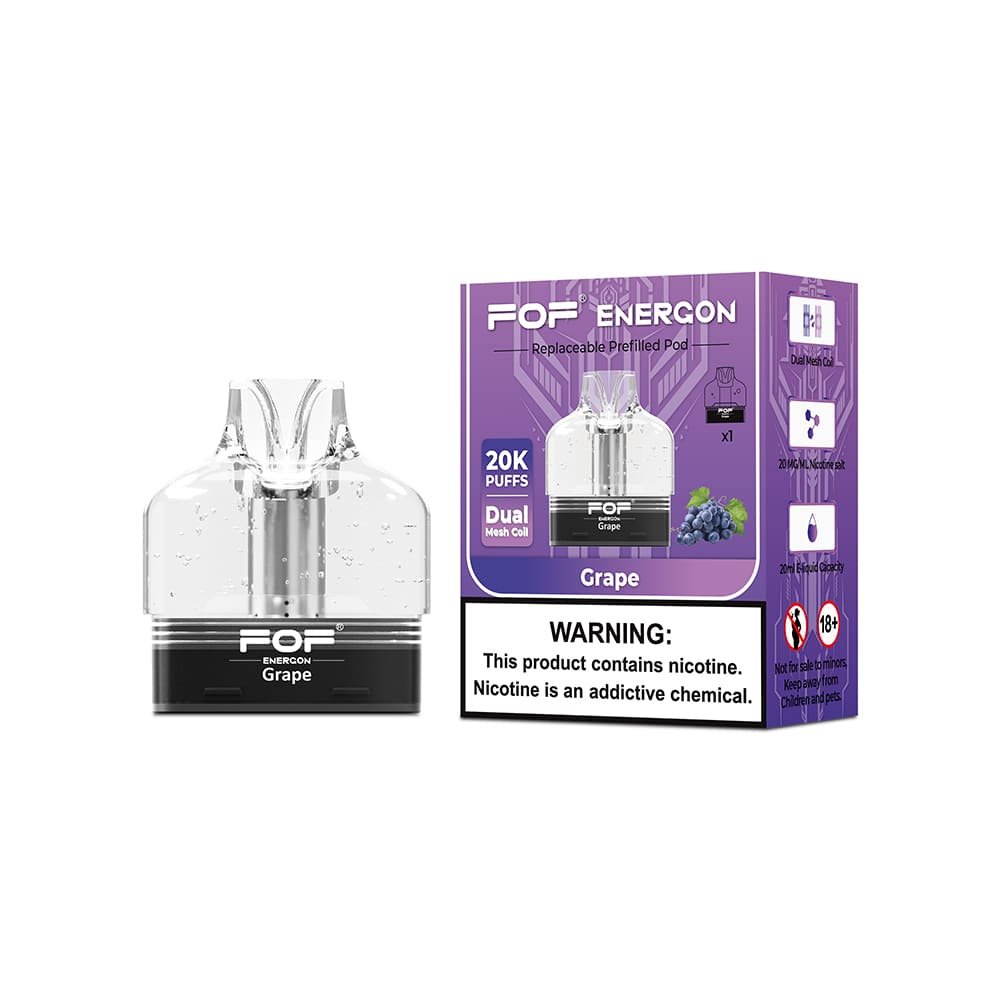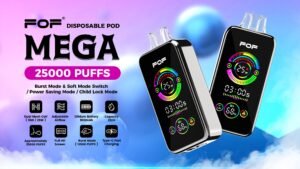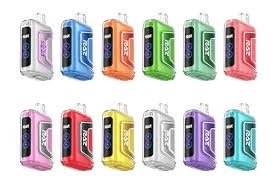Vaping raises many questions, especially about safety. One common concern: are vape liquids flammable? It's a valid question, considering the heat involved.
Yes, vape liquids are flammable, but the degree of flammability varies. Propylene glycol (PG) and vegetable glycerin (VG), the primary ingredients, can ignite at high temperatures. Nicotine itself is not highly flammable, but the alcohol used as a solvent in some e-liquids can increase flammability.
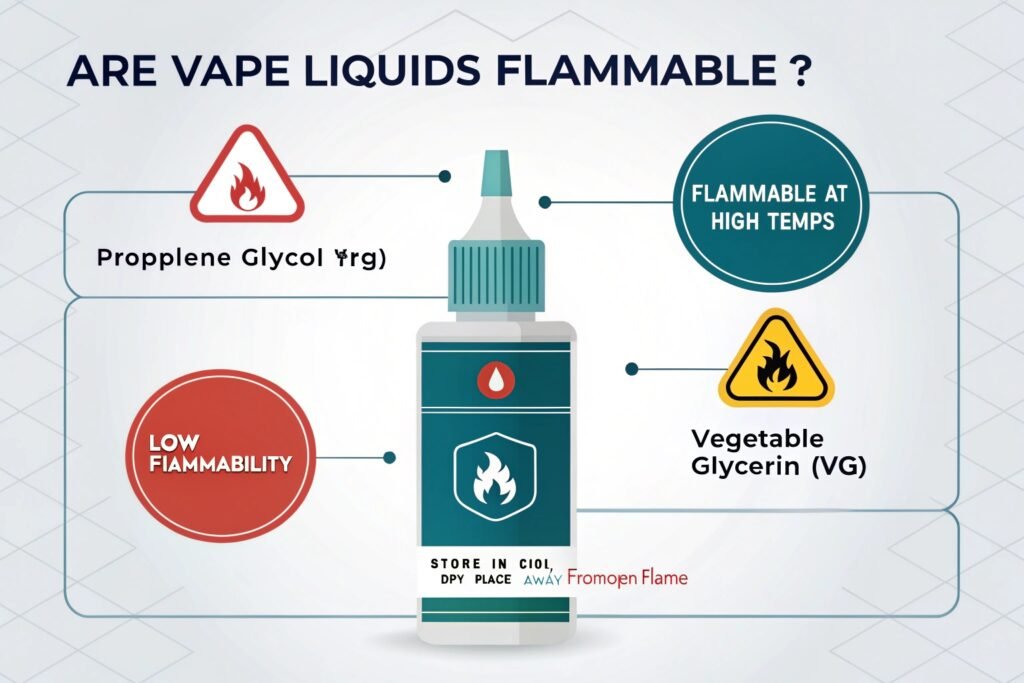 "An e-liquid bottle with a flame icon indicating flammability"
"An e-liquid bottle with a flame icon indicating flammability"
Having worked in the vape industry, I've learned that understanding the flammability of e-liquids is crucial for safe handling. Let's dive into the details.
Are vapes flammable?
The question of whether vapes are flammable isn't straightforward. It depends on which part of the vape you're referring to.
Vapes themselves, as in the devices, aren't inherently flammable. However, the e-liquid inside is. The flammability of a vape largely depends on the composition of the e-liquid and the temperature it's exposed to. A faulty battery can also cause a fire.
 "A vape device with a warning about battery safety and flammability"
"A vape device with a warning about battery safety and flammability"
It's important to differentiate between the device and the e-liquid1. The device itself is electronic, but the e-liquid is a chemical mixture that can pose a fire risk.
The flammability of vapes is a multifaceted issue, influenced by the interplay of several factors. My observations and analysis of product safety data reveal the following key determinants. The composition of the e-liquid significantly influences flammability – e-liquids containing high concentrations of alcohol or other flammable solvents are more prone to ignition than those composed primarily of propylene glycol (PG) and vegetable glycerin (VG). The battery type and condition play a critical role in vape flammability – lithium-ion batteries2, commonly used in vapes, can overheat and ignite if they are damaged, improperly charged, or exposed to extreme temperatures. The wattage and voltage settings affect the temperature of the coil – higher wattage and voltage settings can cause the coil to overheat, potentially igniting the e-liquid or causing the battery to explode. The airflow and ventilation influence the rate of heat dissipation – adequate airflow and ventilation can help dissipate heat generated by the coil and battery, reducing the risk of overheating and ignition. The user behavior and handling practices contribute to vape flammability – improper handling practices, such as leaving the vape in direct sunlight, overcharging the battery, or using damaged components, can increase the risk of fire.
The types of vape devices that are more prone to flammability risks include unregulated mods3, devices with damaged batteries, and devices with exposed heating coils. Drawing from my understanding of product design and safety engineering, I've identified the following key characteristics. The unregulated mods lack safety features to prevent overheating – unregulated mods, which lack safety features such as overcharge protection and short-circuit protection, are more prone to overheating and battery explosions, increasing the risk of fire. The devices with damaged batteries pose a significant flammability risk – devices with damaged batteries, such as those with dents, cracks, or swelling, are more likely to overheat and ignite, potentially causing serious injuries. The devices with exposed heating coils can ignite flammable materials – devices with exposed heating coils can ignite flammable materials, such as clothing or furniture, if they come into contact with them, posing a fire hazard. The devices with faulty charging mechanisms can lead to battery overheating – devices with faulty charging mechanisms can overcharge the battery, leading to overheating and potential fire. The devices stored in hot environments are susceptible to thermal runaway – devices stored in hot environments, such as cars or direct sunlight, are susceptible to thermal runaway, a condition in which the battery overheats and ignites, potentially causing an explosion.
The precautions to take to prevent vape flammability include using quality batteries, avoiding overcharging, and storing vapes in a cool, dry place. Through analyzing safety guidelines and user feedback, I've identified the following key measures. The use quality batteries from reputable brands to ensure safety – users should only use quality batteries from reputable brands that have been tested and certified for safety, reducing the risk of battery malfunctions and fires. The avoidance of overcharging the battery to prevent overheating – users should avoid overcharging the battery by disconnecting the vape from the charger once it is fully charged, preventing overheating and potential fire. The storage of vapes in a cool, dry place away from direct sunlight and heat sources to minimize flammability risks – users should store vapes in a cool, dry place away from direct sunlight and heat sources, minimizing the risk of thermal runaway and fire. The inspection of vapes regularly for any signs of damage, such as cracks, dents, or swelling – users should inspect vapes regularly for any signs of damage, such as cracks, dents, or swelling, and replace damaged components immediately. The following manufacturer instructions and safety guidelines to ensure proper usage and prevent accidents – users should carefully read and follow manufacturer instructions and safety guidelines to ensure proper usage and prevent accidents related to vape flammability.
Can you combust vape juice?
Combustion is the process of burning something. Can vape juice actually burn?
Yes, you can combust vape juice, but it requires high temperatures. The components of vape juice, especially PG and VG, can burn if exposed to a sufficient heat source. This is more likely to happen in situations like a dry hit (when the coil is not saturated) or a battery malfunction.
 "A close-up of a burnt coil inside a vape device"
"A close-up of a burnt coil inside a vape device"
Combustion isn't the typical vaping experience, but it's a potential risk. Understanding the conditions that lead to combustion4 is key to preventing it.
The factors that contribute to the combustion of vape juice are multifaceted, encompassing device-related issues, user behavior, and environmental conditions. Drawing from my understanding of chemical reactions and thermodynamics, I've identified the following key determinants. The overheating of the coil beyond its ignition temperature is a primary cause of combustion – if the coil overheats beyond its ignition temperature, it can cause the e-liquid to combust, producing harmful chemicals and potentially igniting surrounding materials. The inadequate wicking and dry hits can lead to combustion – when the wicking material in the atomizer is not saturated with e-liquid, the coil can overheat and cause a dry hit, leading to combustion and the release of unpleasant fumes. The high wattage and voltage settings increase the risk of combustion – using high wattage and voltage settings5 can cause the coil to overheat more quickly, increasing the risk of combustion, particularly if the wicking is inadequate. The presence of flammable additives in the e-liquid can lower the ignition temperature – certain additives, such as alcohol or flavorings, can lower the ignition temperature of the e-liquid, making it more prone to combustion. The improper storage of e-liquids in hot environments can degrade the components – improper storage of e-liquids in hot environments can degrade the components, making them more susceptible to combustion when heated.
The signs that vape juice is combusting include a burnt taste6, harsh vapor, and visible smoke. Through analyzing user feedback and chemical analysis reports, I've identified the following key indicators. The presence of a burnt taste indicates that the e-liquid is overheating and potentially combusting – a distinct burnt taste is a clear indication that the e-liquid is overheating and potentially combusting, signaling the need to adjust settings or replace the coil. The production of harsh vapor with an acrid smell suggests combustion byproducts – the production of harsh vapor with an acrid smell suggests the presence of combustion byproducts, which can irritate the respiratory system and pose health risks. The observation of visible smoke emanating from the device indicates combustion – visible smoke emanating from the device is a clear sign of combustion, requiring immediate attention to prevent further damage or injury. The darkening or discoloration of the e-liquid in the tank suggests degradation – the darkening or discoloration of the e-liquid in the tank suggests that the components are degrading, potentially increasing the risk of combustion. The unusual popping or crackling sounds coming from the atomizer indicate overheating – unusual popping or crackling sounds coming from the atomizer can indicate overheating and potential combustion, requiring a reduction in wattage or voltage.
The steps to take if vape juice is combusting include turning off the device, removing the battery, and ventilating the area. Through analyzing safety protocols and emergency response procedures, I've identified the following key actions. The turning off the device immediately to prevent further heating – the first step is to turn off the device immediately to prevent further heating and potential damage. The removing the battery to cut off the power supply – removing the battery cuts off the power supply, preventing further heating and reducing the risk of fire or explosion. The ventilating the area to dissipate fumes and prevent inhalation – ventilating the area by opening windows or using a fan helps dissipate fumes and prevent inhalation of harmful combustion byproducts. The inspecting the device for damage and replacing any faulty components – inspecting the device for damage and replacing any faulty components, such as the coil or battery, is crucial for preventing future incidents. The seeking medical attention if any respiratory symptoms develop – seeking medical attention if any respiratory symptoms, such as coughing, wheezing, or shortness of breath, develop after inhaling combusted vape juice is essential to ensure proper treatment and prevent long-term health complications.
What happens to vape juice in heat?
Heat can significantly affect the properties of vape juice. How does it change?
When exposed to heat, vape juice can degrade, changing its flavor and potency. The nicotine can oxidize, and the flavorings can break down. High temperatures can also thin the e-liquid, leading to leaks. It's best to store vape juice in a cool, dark place.
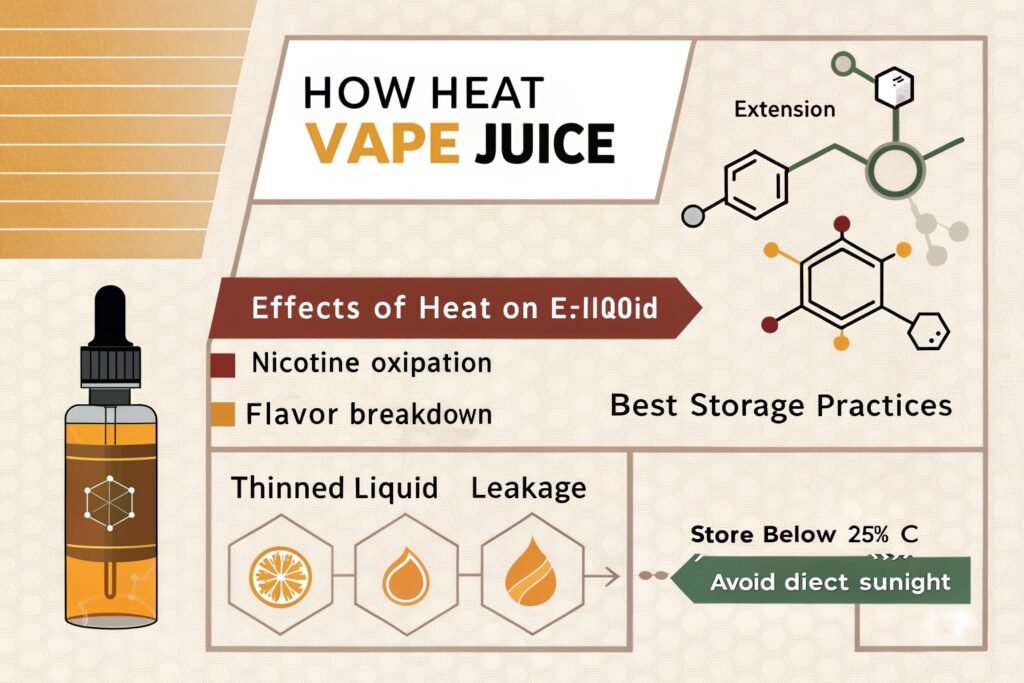 "Vape juice bottles stored in a cool, dark place, away from direct sunlight"
"Vape juice bottles stored in a cool, dark place, away from direct sunlight"
Heat can alter the chemical composition of vape juice, affecting both its taste and safety. Proper storage is essential.
The specific effects of heat on vape juice are complex and depend on the duration and intensity of exposure, as well as the composition of the e-liquid. Drawing from my understanding of chemical kinetics and thermodynamics, I've identified the following key phenomena. The degradation of nicotine7 reduces potency and alters flavor – heat can accelerate the degradation of nicotine, reducing its potency and altering its flavor, potentially leading to a less satisfying vaping experience. The breakdown of flavorings changes the taste and aroma – heat can cause the flavorings to break down, changing the taste and aroma of the e-liquid, potentially making it less enjoyable or even unpalatable. The thinning of e-liquid increases the risk of leaks – heat can thin the e-liquid, reducing its viscosity and increasing the risk of leaks from the tank or pod, creating a mess and potentially damaging the device. The oxidation of components8 produces harmful byproducts – heat can accelerate the oxidation of components, such as nicotine and PG, producing harmful byproducts that can irritate the respiratory system and pose health risks. The separation of ingredients alters the consistency and performance – heat can cause the ingredients to separate, altering the consistency and performance of the e-liquid, potentially leading to uneven heating and inconsistent vapor production.
The ideal storage conditions for vape juice9 include a cool, dark, and dry environment, away from direct sunlight and extreme temperatures. Through analyzing product stability data and storage guidelines, I've identified the following key recommendations. The storage of vape juice in a cool environment (below 25°C) to slow down degradation – storing vape juice in a cool environment (below 25°C) helps slow down the degradation of nicotine and flavorings, preserving its potency and flavor. The protection of vape juice from direct sunlight to prevent oxidation – protecting vape juice from direct sunlight prevents oxidation, which can alter the color, taste, and potency of the e-liquid. The storage of vape juice in a dry environment to prevent moisture contamination – storing vape juice in a dry environment prevents moisture contamination, which can alter its consistency and promote bacterial growth. The use of airtight containers to minimize air exposure – using airtight containers minimizes air exposure, which can accelerate the degradation of nicotine and flavorings. The labeling of stored vape juice with the date of purchase or mixing to track shelf life – labeling stored vape juice with the date of purchase or mixing allows users to track its shelf life and discard it when it expires.
The warning signs that vape juice has been affected by heat include discoloration, changes in viscosity, and altered taste or smell. Through analyzing user feedback and product quality control data, I've identified the following key indicators. The discoloration of the e-liquid indicates degradation – discoloration of the e-liquid, such as darkening or browning, indicates that the nicotine and flavorings have degraded due to heat exposure. The changes in viscosity suggest altered consistency – changes in viscosity, such as thinning or thickening, suggest that the components have separated or degraded, affecting the consistency of the e-liquid. The altered taste or smell indicates chemical changes – altered taste or smell, such as a burnt or off-flavor, indicates that the chemical composition of the e-liquid has changed due to heat exposure. The formation of sediment or crystals suggests ingredient separation – the formation of sediment or crystals at the bottom of the bottle suggests that the ingredients have separated or precipitated out of solution. The reduced vapor production or weak flavor indicates decreased potency – reduced vapor production or weak flavor indicates that the nicotine and flavorings have lost their potency due to heat exposure.
Is liquid nicotine flammable?
Nicotine is a key component of many e-liquids. Is it flammable on its own?
Liquid nicotine, in its pure form, is not highly flammable. However, the solutions in which nicotine is typically found, such as e-liquids containing alcohol or other flammable solvents, can be flammable. The flammability depends more on the solvent than the nicotine itself.
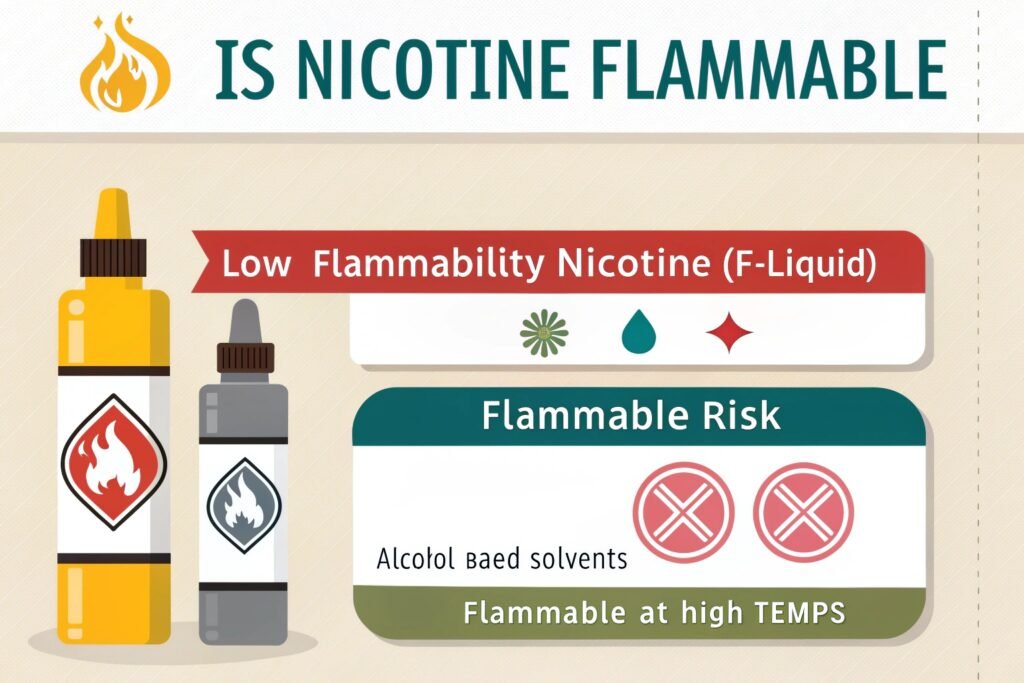 "A bottle of liquid nicotine with a warning label indicating potential hazards"
"A bottle of liquid nicotine with a warning label indicating potential hazards"
While nicotine itself doesn't pose a major fire risk, the solutions it's mixed with can. This is an important distinction to keep in mind.
The flammability characteristics of liquid nicotine10 depend on its concentration, purity, and the presence of other flammable substances. Drawing from my understanding of chemical properties and safety data, I've identified the following key aspects. The pure nicotine is not highly flammable, but it can be toxic – pure nicotine is not highly flammable, but it is a highly toxic substance that can cause serious health problems if ingested or absorbed through the skin. The nicotine solutions containing flammable solvents pose a fire risk – nicotine solutions containing flammable solvents, such as alcohol or propylene glycol, can pose a fire risk if exposed to heat or open flames. The concentration of nicotine affects the flammability of the solution – higher concentrations of nicotine may slightly increase the flammability of the solution, but the primary factor is the presence of flammable solvents. The flash point of nicotine solutions indicates the temperature at which they can ignite – the flash point of nicotine solutions indicates the temperature at which they can ignite, with lower flash points indicating higher flammability. The safety data sheets (SDS)11 provide information on the flammability of nicotine and nicotine solutions – safety data sheets (SDS) provide detailed information on the flammability, toxicity, and other hazards associated with nicotine and nicotine solutions.
The safe handling and storage practices for liquid nicotine include wearing protective gear, storing in a secure location, and preventing spills. Through analyzing safety guidelines and laboratory protocols, I've identified the following key measures. The wearing of protective gloves and eyewear when handling liquid nicotine to prevent skin contact and eye irritation – wearing protective gloves and eyewear when handling liquid nicotine prevents skin contact and eye irritation, minimizing the risk of exposure and potential health problems. The storing liquid nicotine in a secure, locked location away from children and pets – storing liquid nicotine in a secure, locked location away from children and pets prevents accidental ingestion or exposure, which can be life-threatening. The preventing spills and cleaning up any spills immediately with absorbent materials – preventing spills and cleaning up any spills immediately with absorbent materials minimizes the risk of exposure and potential contamination. The disposing of liquid nicotine waste properly according to local regulations – disposing of liquid nicotine waste properly according to local regulations prevents environmental contamination and potential harm to others. The labeling of containers clearly with hazard warnings and nicotine concentration – labeling containers clearly with hazard warnings and nicotine concentration ensures that others are aware of the potential risks and can take appropriate precautions.
The potential health hazards associated with exposure to liquid nicotine include nicotine poisoning12, skin irritation, and respiratory problems. Through analyzing toxicology reports and medical literature, I've identified the following key risks. The nicotine poisoning can occur through ingestion, skin contact, or inhalation – nicotine poisoning can occur through ingestion, skin contact, or inhalation, leading to symptoms such as nausea, vomiting, dizziness, and seizures. The skin irritation can result from direct contact with liquid nicotine – direct contact with liquid nicotine can cause skin irritation, redness, and burning sensations. The respiratory problems can arise from inhaling nicotine vapor or fumes – inhaling nicotine vapor or fumes can cause respiratory problems, such as coughing, wheezing, and shortness of breath, particularly in individuals with pre-existing respiratory conditions. The cardiovascular effects can include increased heart rate and blood pressure – nicotine can have cardiovascular effects, including increased heart rate and blood pressure, potentially increasing the risk of heart attack and stroke. The neurological effects can include dizziness, confusion, and seizures – nicotine can have neurological effects, including dizziness, confusion, and seizures, particularly in cases of nicotine poisoning.
Conclusion
E-liquids are indeed flammable, but the level of risk depends on their composition and how they're handled. While nicotine itself isn't highly flammable, other ingredients like PG, VG, and alcohol can be. Always store your vape juice safely and be aware of the potential for combustion.
-
Understanding the safety concerns of e-liquids can help users make informed choices and reduce fire risks. ↩
-
Exploring the role of lithium-ion batteries in vape safety can provide insights into preventing potential hazards. ↩
-
Learning about the risks of unregulated mods can help users choose safer vaping devices and avoid accidents. ↩
-
Understanding the risks of combustion in vaping can help users make safer choices and avoid harmful situations. ↩
-
Exploring the impact of wattage and voltage on vaping safety can help users optimize their devices and reduce risks. ↩
-
Learning about the implications of a burnt taste in vape juice can help users identify potential issues and take corrective actions. ↩
-
Understanding nicotine degradation can help vapers maintain the quality and safety of their vape juice. ↩
-
Exploring oxidation effects can inform users about potential health risks and how to store vape juice safely. ↩
-
Learning about proper storage conditions can significantly enhance the longevity and quality of your vape juice. ↩
-
Discover the flammability characteristics of liquid nicotine to ensure safe handling and storage practices. ↩
-
Explore this link to understand the critical safety information provided in SDS for handling nicotine safely. ↩
-
Learn about the symptoms and treatment options for nicotine poisoning to stay informed and safe. ↩

